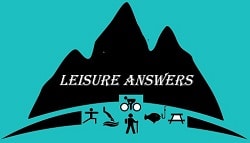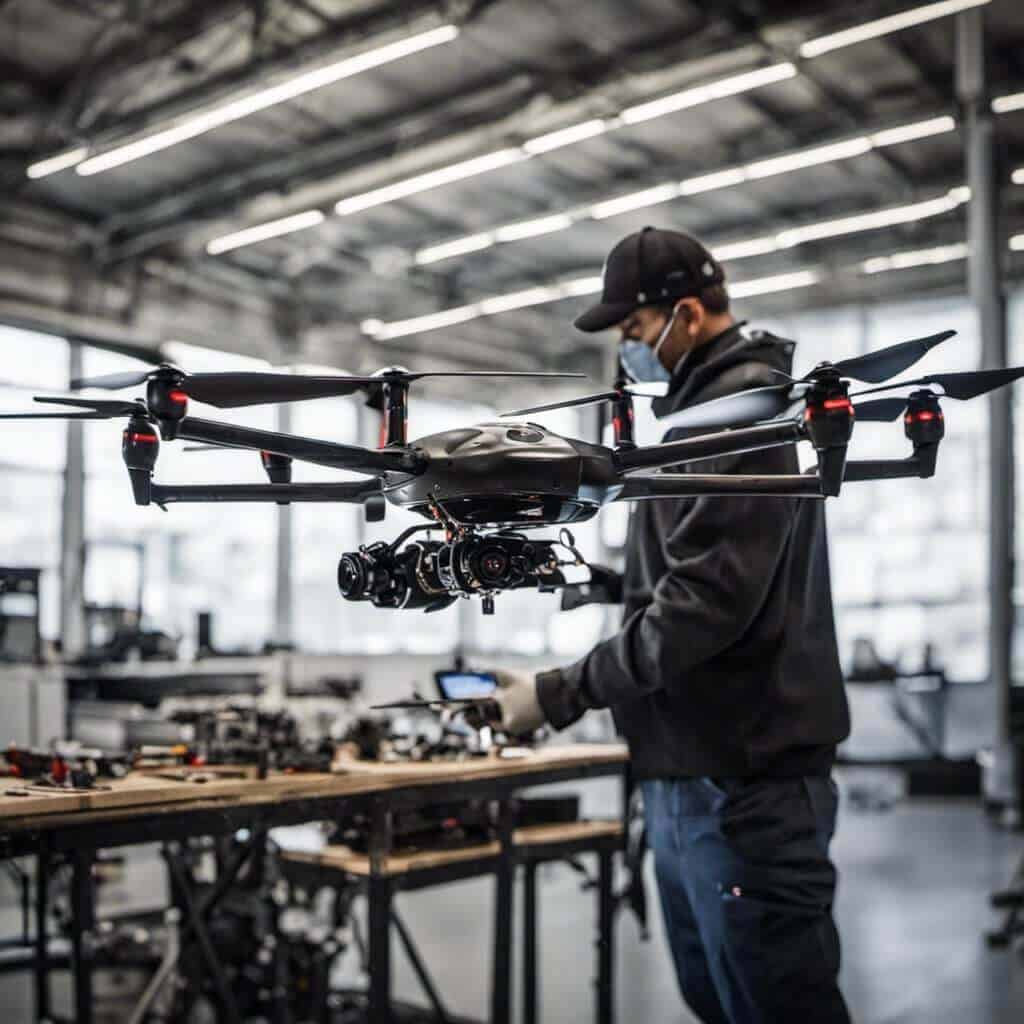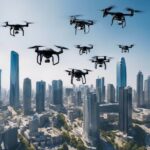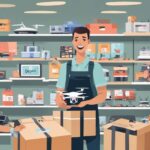Maintaining and troubleshooting your drone is essential to being a drone owner. Whether you are a professional photographer, videographer, or just someone who enjoys flying drones during your leisure time, drone servicing can save you time, money, and frustration.
Drone Servicing – Maintenance
Regular drone maintenance ensures its longevity and optimal performance, including cleaning your drone after each flight, checking for damages, and replacing worn out parts. Additionally, understanding the different components of your drone and how they work together can help you identify any issues that may arise during flight.
The first step is to inspect your drone visually to help prevent issues from arising and to extend the life of your drone. Here are a few things to check regularly:
- Check the propellers are securely attached and look for signs of damage, cracks, warping or other wear and tear.
- Clean the drone and remove any debris that may have accumulated on it.
- Inspect the landing gear for any damage.
- Check the brushless motors for any signs of wear and tear.
- Look for any visible damage, such as cracks or missing parts.
- Ensure the camera lens is clean and the gimbal is functioning correctly.
- Check that the drone’s battery is charged and inserted correctly.
Drone Servicing – Component Maintenance
Drone servicing includes maintaining the drone components between flights as well as doing a pre-flight check. See our guide Drone Pre-flight Check Essentials for an in depth guide on all that needs to be a part of a pre-flight check.
Battery Maintenance
The battery is a crucial component of your drone, so taking care of it properly is essential. Here are a few tips for maintaining your drone’s battery:
- Store the drone battery at room temperature, away from direct sunlight or extreme cold, such as an uninsulated shed in winter when the temperature drops below -20 degrees Celsius.
- Charge the drone’s battery only with the charger provided by the manufacturer.
- Don’t overcharge the battery or let it completely discharge.
- Don’t use a damaged or swollen battery.
- Oil the motor if it is not a brushless motor. Most manufacturers state brushless motors do not need oiling and that this decreases the motor’s lifespan.
Firmware Updates
Drone manufacturers release firmware updates to fix bugs and improve performance. Here are a few things to keep in mind when updating your drone’s firmware:
- Always download firmware updates from the manufacturer’s website.
- Follow the manufacturer’s instructions carefully when updating the firmware.
- Don’t interrupt the update process or turn off the drone during the update.
Replacing Drone Components
If a component of your drone becomes damaged or stops working, you may need to replace it.
- Only use replacement components provided by the manufacturer.
- Follow the manufacturer’s instructions when replacing parts.
- If you are uncomfortable with replacing a component, take your drone to a professional for repair.
Drone Servicing – Troubleshooting
Despite regular maintenance, drones can still experience technical difficulties, so troubleshooting is equally important. From calibration issues to connectivity problems, knowing how to diagnose and fix these issues can prevent accidents and ensure a safe and enjoyable flight experience.
It is helpful to have access to the correct information about your drone’s performance, which can include data on battery life, flight time, and other vital metrics. By keeping track of the drone’s flight and repair information, you can identify patterns and trends in your drone’s performance and make adjustments to improve efficiency. So, get a log book and keep track of your drone maintenance, issues, and parts.
Several common problems can be quickly resolved with a few simple troubleshooting steps. Here are some of the most common issues and how to fix them.
Frame
The drone’s frame is the main structure of the drone and holds all other components in place. The frame can be stiff, flexible or very flexible, each with pros and cons. Most frames have similar shapes and construction, but faults in the frame can noticeably impact a drone’s flight performance. Issues may arise in aerodynamics due to overall weight, cracks and warps. The resonance frequency and rigidity of the frame can affect how the drone flies, so check for damages and other defects.
Motor and Propellers
The motor and propellers provide the lift and propulsion that allows your drone to fly. The propellers are attached to the motor, and the motor’s job is to convert electrical energy into mechanical energy, which rotates the propellers and generates lift.
If your drone is experiencing issues with lift or stability, check your drone’s motors and propellers for any damage or wear and check the motor’s wiring to ensure it is properly connected. Also, check the propeller’s balance to ensure it is appropriately aligned, correctly attached and spinning freely. If these solutions do not resolve the issue, you can recalibrate your drone’s motors or update the firmware. If you still have problems, it could be due to a faulty motor or damaged propellers. Make sure to purchase a motor compatible with your drone’s model.
Gimbal and Camera Lens
The gimbal and camera lens stabilize and capture high quality footage. The gimbal is a mechanical device that allows the camera to rotate and keeps the camera level and steady while the lens determines the field of view and focal length. Check to see if the lens is dirty or scratched, and if it is, clean it with a microfiber cloth or replace the lens.
If your drone’s footage is shaky or blurry, it could be due to a malfunctioning gimbal or damaged camera lens. Make sure to clean and inspect them regularly to ensure optimal performance.
If your drone’s camera still isn’t producing the quality of images or videos you were expecting, it may be due to the camera settings. Check your camera settings and adjust them as needed. Experiment with different settings to find the best combination for your needs.
If you still have issues, try resetting your camera settings or updating the firmware. If the problem persists, you may need to replace the camera module.
GPS Module and Antennas
The GPS module and antennas provide location data and ensure accurate navigation. The GPS module receives signals from satellites and calculates your drone’s position, while the antennas transmit and receive signals to and from the GPS module.
Be aware of the capabilities and limitations of your drone’s RTH (Return-to-Home) feature. This feature can be a lifesaver in a lost connection or other emergency, but it’s essential to understand how it works and when to use it. Read the manual and practice using this feature before flying your drone in unfamiliar or challenging environments.
If your drone is having trouble maintaining a GPS signal, check to see if the module is connected correctly and that your drone is in an open area with a clear line of sight to the sky. Trees, buildings, and other obstacles can interfere with the GPS signal.
If you still have issues, try resetting your drone’s GPS settings or updating the firmware. If the above resolutions do not work, it could be due to a faulty GPS module or damaged antennas. Make sure to inspect and replace them if necessary.
Flight Controller and ESC
The flight controller and ESC (Electronic Speed Controller) work together to control the speed and direction of your drone. The flight controller is your drone’s brain, processing data from various sensors and sending commands to the ESC. The ESC regulates the power sent to the motor, controlling its speed and direction. If your drone is experiencing issues with stability or control, it could be due to a malfunctioning flight controller or ESC. Make sure to inspect and replace them if necessary.
Battery
The battery powers the drone and its components, and temperature, wind, and altitude can affect your drone’s battery life. If your drone’s battery is not holding a charge, you may need to replace it. Make sure to purchase a battery compatible with your drone’s model.
Drone Servicing – Storage
Proper storage of your drone is crucial to ensure its longevity and performance and drone servicing. Here are some tips for storing your drone:
- Always keep your drone in a dry, cool place, away from direct sunlight. Exposure to direct sunlight can damage the drone’s sensors, warp your propellers and damage other components.
- Remove the battery before storing the drone for an extended period, and keep the battery in a cool and dry place.
- If you are storing the drone for an extended period, six months or more, it is recommended to charge the drone’s battery to around 50% capacity before storing it, as this helps to prolong the battery life.
- Use a protective case or bag to keep the drone to prevent dust and other debris from accumulating on the drone’s components.
- Before storing the drone, ensure it is clean and free from dirt or debris. Use a soft cloth to clean the drone’s body and parts.
Final Thoughts
Consistent drone servicing – maintenance and troubleshooting are essential for maximizing the lifespan and performance of your device. Regular inspections and repairs can prevent potential malfunctions and ensure safe operation.
Frequently Asked Questions
What is the recommended maintenance schedule for drones?
It’s recommended to perform basic maintenance after every flight, such as cleaning the propellers and checking for damage. Refer to the manufacturer’s recommended schedule for more in-depth care, such as motor and battery replacement.
What are common problems for drones?
Common problems include battery issues, motor failure, and connectivity issues. Solutions may consist of reseating, replacing, repairing the component or resetting the drone’s firmware.
Are there any courses available for drone maintenance?
Yes, there are courses available for drone maintenance. These courses can provide valuable insights, knowledge and skills for maintaining and repairing drones. Check with your local drone retailer or online for available classes. Obtaining your certificate or license is the first step – Drone Pilot School






